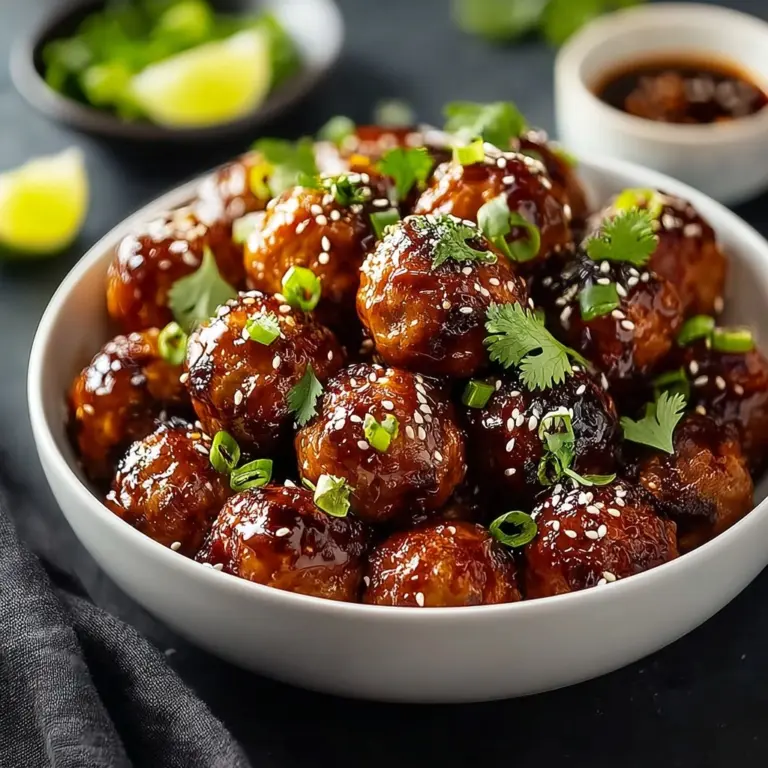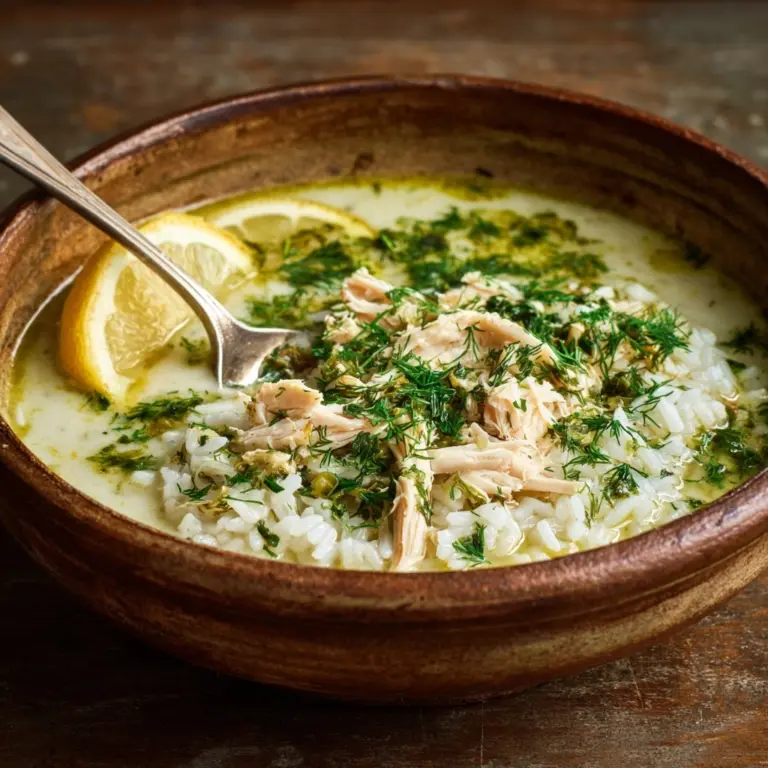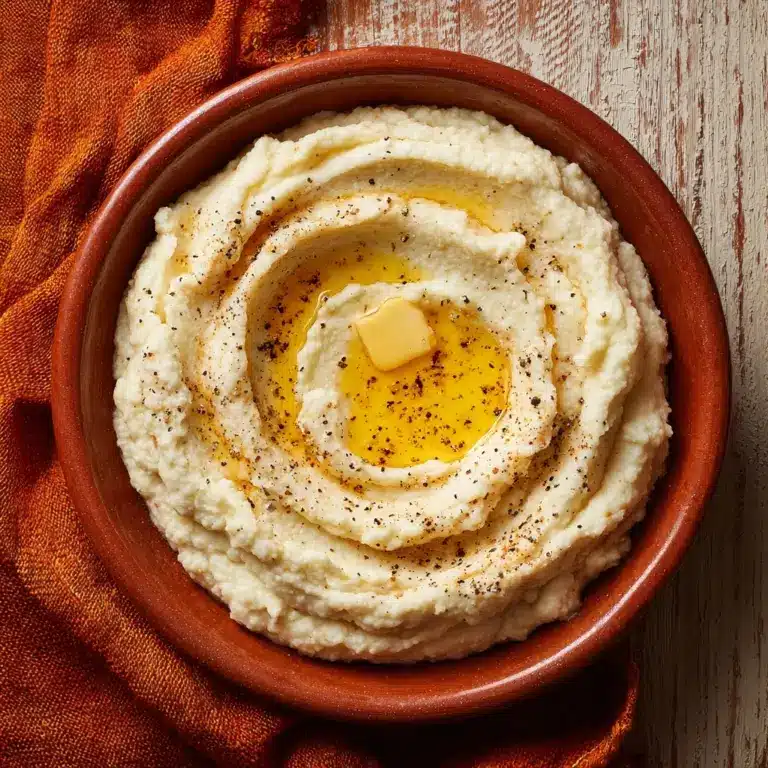Korean Bibimbap Recipe
If you’ve ever wanted to dive into a bowl bursting with vibrant colors, contrasting textures, and unforgettable flavors, then Korean Bibimbap is your next obsession. This iconic dish is all about harmony—harmonizing warm rice with fresh vegetables, savory mushrooms, a perfectly cooked egg, and that irresistible spicy-sweet kick of gochujang sauce. Each bite delivers a symphony of taste that’s comforting, nourishing, and downright joyful to eat. Trust me, once you try Korean Bibimbap, it’s hard not to fall in love with every spoonful.
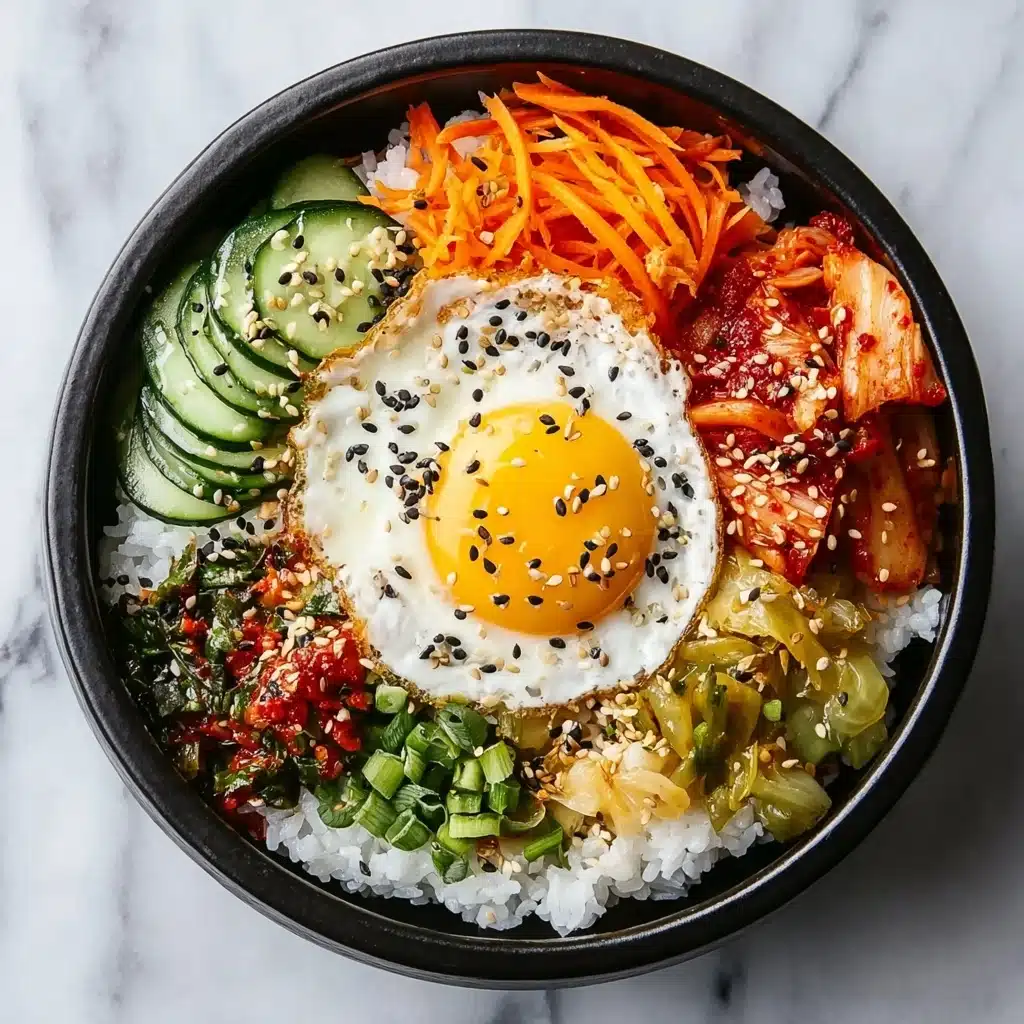
Ingredients You’ll Need
The magic of Korean Bibimbap lies in its simple yet essential ingredients. Each element brings something special: texture, flavor, or color, creating a dish that’s as beautiful as it is delicious. Here’s what you’ll need to make this classic dish come alive.
- 2 cups cooked rice: A fluffy base that soaks up all the vibrant flavors in every mouthful.
- 1 tablespoon sesame oil: Adds a warm, nutty aroma that you’ll love.
- 1 teaspoon vegetable oil: Perfect for sautéing ingredients without overpowering their natural taste.
- 1/2 cup spinach, blanched: A tender green that adds freshness and color.
- 1/2 cup bean sprouts, blanched: Crunchy and light, they give wonderful texture contrast.
- 1/2 cup shiitake mushrooms, sliced: Earthy and meaty, these mushrooms bring umami depth.
- 1/2 cup carrots, julienned: Sweet and crisp for a nice bite.
- 1/2 cup cucumber, julienned: Cool and refreshing, balancing the richer components.
- 2 large eggs: Cooked sunny-side up for a luscious, runny yolk that binds everything together.
- 2 tablespoons gochujang (Korean red pepper paste): This is the star sauce with a spicy and sweet flavor that defines Korean Bibimbap.
- 1 tablespoon sesame seeds: Adds a subtle crunch and nuttiness.
- 1 tablespoon soy sauce: For savory depth in the sauce mixture.
- 1 teaspoon garlic, minced: Brings aromatic warmth to the dish.
- 1 teaspoon sugar: Balances the heat and saltiness.
- 1 tablespoon rice vinegar: Introduces a gentle tanginess to brighten the flavors.
- 1 tablespoon olive oil: Helps blend the sauce smoothly.
- 1 tablespoon cooked beef (optional): For an extra protein boost and meaty richness.
How to Make Korean Bibimbap
Step 1: Crisp Up the Rice
Start by heating sesame oil in a pan and tossing in your cooked rice. Stir-fry it for a few minutes until it gets just a touch crispy. This step transforms simple rice into a textural delight that’s essential for authentic Korean Bibimbap.
Step 2: Sauté Mushrooms and Garlic
Using the same pan, warm vegetable oil and add the sliced shiitake mushrooms. Cook until they’re tender and have released their moisture, then stir in minced garlic until fragrant. The combination of earthy mushrooms and aromatic garlic creates a deep flavor base for the dish.
Step 3: Prepare the Vegetables
While the mushrooms cook, blanch the spinach and bean sprouts briefly – this softens them while keeping their vibrant color and crispness. Next, julienne your carrots and cucumber into thin strips. Each vegetable adds a distinct color and texture, making the Korean Bibimbap as beautiful as it is delicious.
Step 4: Cook the Eggs
In a small pan, cook your eggs sunny-side up with a little oil so the yolks stay runny and luscious. This egg will act like a rich sauce when you mix everything together later, tying all the flavors perfectly.
Step 5: Make the Gochujang Sauce
Whisk together gochujang, soy sauce, rice vinegar, sesame seeds, sugar, and olive oil in a small bowl. This sauce is the soul of Korean Bibimbap, bringing a savory, sweet, and spicy punch that makes the whole dish pop.
Step 6: Assemble Your Bibimbap
In your serving bowl, spread the stir-fried rice as the base. Arrange each prepared vegetable and optional cooked beef in distinct sections on top of the rice, making a colorful and inviting pattern. Place the sunny-side up egg right in the center, then drizzle the gochujang sauce generously over everything.
How to Serve Korean Bibimbap
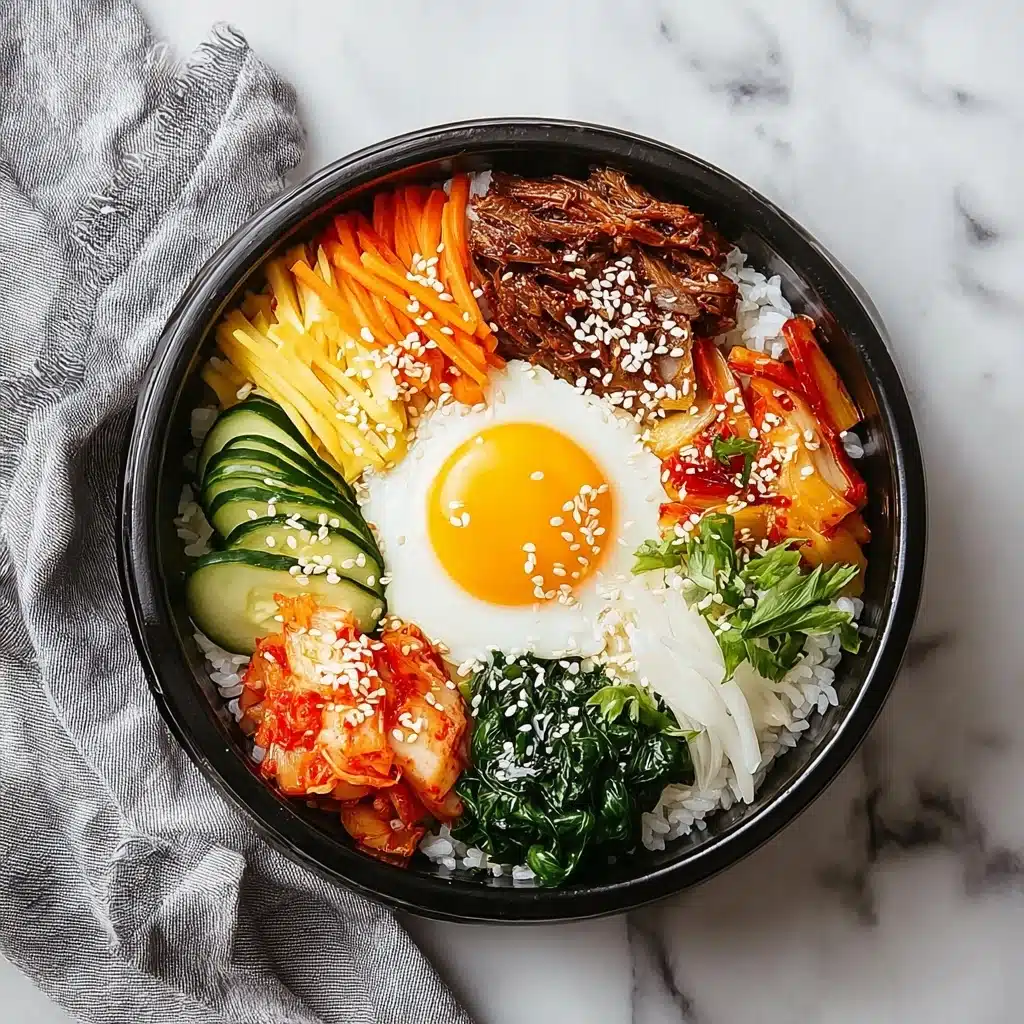
Garnishes
Sprinkle additional toasted sesame seeds or a few extra fresh scallions on top for a little crunch and brightness. Some people love adding a little crushed seaweed or sliced chili to amp up the visuals and flavor even more.
Side Dishes
Since Korean Bibimbap is a full meal on its own, simple side dishes like kimchi, pickled radish, or steamed dumplings complement it beautifully. The tangy ferment of kimchi pairs especially well with the spicy gochujang sauce.
Creative Ways to Present
If you want to impress guests, serve Korean Bibimbap in stone bowls (dolsot) to keep it piping hot and create a crispy rice crust at the bottom. You can also offer the veggies and sauce arrayed separately in small dishes for a DIY vibe that lets everyone build their perfect bite.
Make Ahead and Storage
Storing Leftovers
Place any leftover Korean Bibimbap in an airtight container and refrigerate for up to 2 days. Make sure to store the sauce separately if you want to keep everything fresh and vibrant for reheating.
Freezing
This dish isn’t the best candidate for freezing due to the fresh vegetables and egg, which can lose their texture. However, you can freeze extra cooked rice and mushrooms separately, then assemble fresh veggies and sauce when ready to eat.
Reheating
To reheat leftovers, place the bibimbap components in a pan and gently warm on medium heat. Stir often to avoid sticking and consider topping it with a freshly cooked egg to bring back that silky richness.
FAQs
What is Korean Bibimbap?
Korean Bibimbap is a traditional dish featuring warm rice topped with an assortment of seasoned vegetables, a fried egg, and spicy gochujang sauce. It’s a balanced, flavorful meal that’s both healthy and comforting.
Can I make Korean Bibimbap vegetarian?
Absolutely! Simply omit the cooked beef and opt for extra mushrooms or tofu for protein. The variety of vegetables and the gochujang sauce ensure the dish remains hearty and satisfying.
How spicy is the gochujang sauce in Korean Bibimbap?
Gochujang has a moderate heat with a sweet, fermented flavor. If you prefer less spice, adjust the amount of gochujang or mix it with a little sesame oil or sugar to mellow its intensity.
Is Korean Bibimbap healthy?
Yes, it’s a nutritious meal packed with vegetables, protein, and whole grains. The balance of fresh and cooked ingredients makes it not only delicious but also nourishing and well-rounded.
What’s the best way to mix Korean Bibimbap before eating?
Before eating, drizzle your gochujang sauce over everything and use a spoon to mix the rice, vegetables, egg, and sauce thoroughly. This combines all the flavors and textures into every bite for the classic experience.
Final Thoughts
I hope you’re as excited as I am for you to try Korean Bibimbap—it’s a dish that truly warms the soul and excites the palate with every forkful. Simple to prepare yet brimming with flavor and color, it’s perfect for any day you want a meal that feels like a celebration. Gather your ingredients, have fun assembling your bowl, and enjoy the beautiful harmony that Korean Bibimbap brings to the table.
Print
Korean Bibimbap Recipe
- Total Time: 35 minutes
- Yield: 2 servings 1x
- Diet: Low Salt
Description
Korean Bibimbap is a vibrant and nutritious mixed rice dish featuring an array of fresh vegetables, savory mushrooms, a fried egg, and optional beef, all beautifully arranged and topped with a flavorful gochujang sauce. This dish offers a harmonious blend of textures and bold flavors, making it a wholesome and satisfying meal perfect for any occasion.
Ingredients
Rice and Oils
- 2 cups cooked rice
- 1 tablespoon sesame oil
- 1 teaspoon vegetable oil
- 1 tablespoon olive oil
Vegetables
- 1/2 cup spinach, blanched
- 1/2 cup bean sprouts, blanched
- 1/2 cup shiitake mushrooms, sliced
- 1/2 cup carrots, julienned
- 1/2 cup cucumber, julienned
- 1 teaspoon garlic, minced
Protein
- 2 large eggs
- 1 tablespoon cooked beef (optional)
Sauce and Seasoning
- 2 tablespoons gochujang (Korean red pepper paste)
- 1 tablespoon sesame seeds
- 1 tablespoon soy sauce
- 1 teaspoon sugar
- 1 tablespoon rice vinegar
Instructions
- Prepare the rice: Heat a medium-sized pan over medium heat and add the sesame oil. Once warm, add the cooked rice and stir-fry for 2 to 3 minutes until the rice is lightly crisped. Remove and set aside.
- Cook the mushrooms: In the same pan, heat the vegetable oil. Add sliced shiitake mushrooms and cook for 4 to 5 minutes, stirring occasionally until softened and moisture is released. Add minced garlic and sauté for another minute until fragrant. Transfer to a plate and set aside.
- Cook the eggs: In a small pan over medium-low heat, add a bit of oil and crack the eggs. Cook sunny-side up or to your preferred doneness. Set aside.
- Blanch the greens: Briefly boil spinach and bean sprouts for about 1 minute, then drain thoroughly. Set aside in separate bowls.
- Prepare fresh vegetables: Julienne carrots and cucumber into thin strips and keep them in separate bowls.
- Make the sauce: In a small bowl, combine gochujang, soy sauce, rice vinegar, sesame seeds, sugar, and olive oil. Mix well until fully blended.
- Prepare optional beef: If using, thinly slice cooked beef and set aside.
- Assemble the bibimbap: Start with the stir-fried rice as the base in a large bowl. Arrange the spinach, bean sprouts, cooked shiitake mushrooms, carrots, cucumber, and cooked beef in sections on top of the rice.
- Add the egg and sauce: Place the fried egg on top of the assembled vegetables and rice. Drizzle the prepared gochujang sauce over everything.
- Serve: Serve immediately, mixing all ingredients thoroughly before eating for the best flavor combination.
Notes
- For a vegetarian version, omit the cooked beef.
- You can substitute white rice with brown rice for added fiber and nutrients.
- Adjust the amount of gochujang sauce according to your heat preference.
- Blanching vegetables briefly helps retain their vibrant color and crunch.
- If preferred, the egg can be cooked scrambled or poached.
- Leftover bibimbap ingredients can be stored separately and assembled fresh before serving.
- Prep Time: 20 minutes
- Cook Time: 15 minutes
- Category: Main Course
- Method: Stir-fry, blanching, pan-frying
- Cuisine: Korean
Nutrition
- Serving Size: 1 bowl (about 350g)
- Calories: 480 kcal
- Sugar: 6 g
- Sodium: 520 mg
- Fat: 18 g
- Saturated Fat: 3.5 g
- Unsaturated Fat: 12 g
- Trans Fat: 0 g
- Carbohydrates: 59 g
- Fiber: 5 g
- Protein: 18 g
- Cholesterol: 210 mg
Keywords: Bibimbap, Korean rice bowl, gochujang recipe, Korean vegetables, stir-fried rice, healthy Korean meal, mixed rice dish

